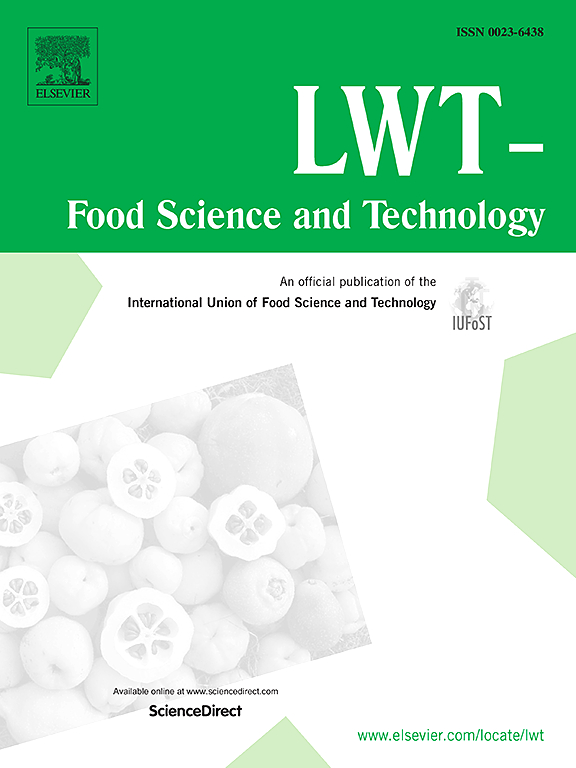Effects of grape seed proanthocyanidin on the conformation and functional properties of lamb myofibrillar protein under hydroxyl radical-induced oxidative stress
IF 6
1区 农林科学
Q1 FOOD SCIENCE & TECHNOLOGY
引用次数: 0
Abstract
The oxidative damage of meat proteins during processing and storage leads to the degradation of the quality of meat products. To overcome this problem, the effects of grape seed proanthocyanidin (GSP) on the antioxidant capacity, structure, and physicochemical properties of the lamb myofibrillar protein (MP) under oxidative stress conditions were investigated. The protein structure and aggregation behavior were characterized by indicators such as sulfhydryl groups, surface hydrophobicity, Fourier transform infrared spectroscopy (FT-IR) and zeta potential. The addition of GSP increased the 2,2-diphenyl-1-picrylhydrazyl (DPPH), 2,2′-azino-bis (3-ethyl-benzothiazoline-6-sulfonic acid) (ABTS) and hydroxyl radical scavenging activity (HRSA) and decreased the content of carbonyl and free amino groups. The sulfhydryl groups content, absolute value of zeta potential, and storage modulus (G′) of oxidized MP were increased with the incorporation of GSP (10 mg/g protein). Intrinsic tryptophan fluorescence and FT-IR results indicated that GSP induced changes in protein conformation by reducing hydrophobic group exposure and restoring the α-helix. GSP, as a natural antioxidant, inhibited oxidative deterioration and modified the functional properties of meat products. This study provides a new way to improve the quality of meat products under oxidizing conditions.
求助全文
约1分钟内获得全文
求助全文
来源期刊

LWT - Food Science and Technology
工程技术-食品科技
CiteScore
11.80
自引率
6.70%
发文量
1724
审稿时长
65 days
期刊介绍:
LWT - Food Science and Technology is an international journal that publishes innovative papers in the fields of food chemistry, biochemistry, microbiology, technology and nutrition. The work described should be innovative either in the approach or in the methods used. The significance of the results either for the science community or for the food industry must also be specified. Contributions written in English are welcomed in the form of review articles, short reviews, research papers, and research notes. Papers featuring animal trials and cell cultures are outside the scope of the journal and will not be considered for publication.
 求助内容:
求助内容: 应助结果提醒方式:
应助结果提醒方式:


